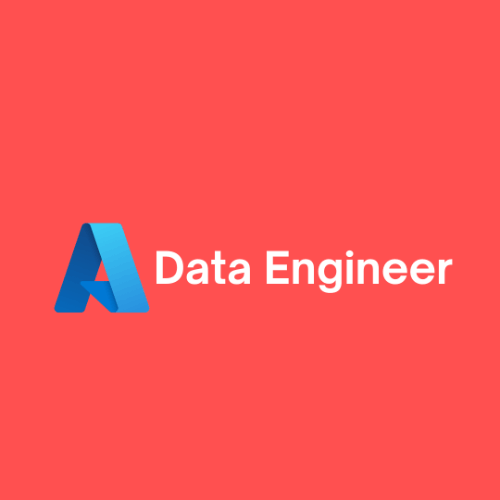About This Course
This program covers essential concepts such as data storage, ingestion, transformation, and security while focusing on key Azure services like Data Factory, Synapse Analytics, Databricks, and Azure Data Lake.START DATE : Going to Start SoonDURATION : 45 DaysWhat’s Included:1. Live Online Training with Industry Experts 2. Real-Time Projects with Hands-On Labs 3. Access to Recorded...
Show moreWhat you'll learn
-
Design and manage scalable Azure data pipelines.
-
Work with Azure Data Factory and ADLS.
-
Build batch and real-time ingestion workflows.
-
Transform data using Synapse Analytics and Databricks.
-
Implement enterprise-grade security and access control.
-
Monitor and optimize pipelines for performance and cost.
Course Curriculum
Learn Azure cloud basics, data engineering concepts, and set up your Azure environment.
-
Day 1 – Azure Cloud Fundamentals
1 min readCloud computing basicsAzure global infrastructure & servicesLab: Navigate Azure Portal and create resource groups
Day 2 – Role of a Data Engineer in Azure
readData engineering lifecycle overviewResponsibilities of a data engineer Azure data services (ADLS, Synapse, Databricks, ADF)
Day 3 – Azure Account & Subscription Setup
readCreating a free Azure account Understanding subscriptions, IAM, and cost management Lab: Configure access controls and budgets
Day 4 – Data Engineering Workflow in Azure
readData pipeline stages: Ingestion → Processing → Storage → Analytics Lab: Deploy sample Azure services and link them
Day 5 – Mini Project & Quiz
readDesign a basic Azure data pipeline architecture Hands-on assessment exercise
Explore Azure storage options, design data models, and manage structured and unstructured data.
-
Day 6 – Azure Blob Storage
readBlob storage tiers (Hot, Cool, Archive) Lab: Upload and manage files in Blob Storage
Day 7 – Azure Data Lake Storage (ADLS Gen2)
readHierarchical namespace & access permissions Lab: Create and configure ADLS for analytics
Day 8 – Azure SQL Database & Managed Instances
readSQL DB vs Managed Instance Lab: Deploy Azure SQL and import sample datasets
Day 9 – Cosmos DB for NoSQL Workloads
readPartitioning, consistency models, and scalability Lab: Create a multi-region Cosmos DB instance
Day 10 – Data Modeling for Azure
readStructured vs Semi-Structured vs Unstructured data Schema-on-Read vs Schema-on-Write approaches
Day 11 – Hands-on Data Loading
readLab: Load raw data into ADLS and Azure SQL Query data using Azure Storage Explorer
Day 12 – Storage Solution Design Challenge
readDesign a storage architecture for a sample use case Review and feedback session
Build ETL/ELT pipelines with Azure Data Factory and integrate both batch and streaming data.
-
Day 13 – ETL vs ELT in Azure
readBatch vs streaming ingestion patterns Azure Data Factory overview
Day 14 – Building Your First ADF Pipeline
readCreate linked services and datasets Lab: Build a pipeline to move data from Blob → Azure SQL
Day 15 – ADF Linked Services, Datasets & Triggers
readOrchestrate pipelines using triggers Scheduling and automation techniques
Day 16 – Data Flows in ADF
readMapping Data Flows vs Wrangling Data Flows Lab: Clean and transform CSV data in ADF
Day 17 – Event-Driven Ingestion with Event Hubs
readIntroduction to Azure Event Hubs Designing real-time ingestion patterns
Day 18 – Streaming Data into ADLS
readLab: Stream data from Event Hub to Azure Data Lake
Day 19 – Real-Time Processing with Azure Stream Analytics
readAggregating and querying streaming data Lab: Create a real-time dashboard
Day 20 – Hybrid Pipeline Mini Project
readCombine batch and streaming pipelines using ADF + Event Hub
Use Synapse Analytics, Databricks, and serverless tools to clean and transform data for analytics.
-
Day 21 – Azure Synapse Analytics Overview
readDedicated vs Serverless SQL Pools Data warehousing concepts and architecture
Day 22 – Loading & Querying Data in Synapse
readPerform analytical SQL queries Lab: Load large datasets into Synapse
Day 23 – Performance Tuning in Synapse
readPartitioning and indexing strategies Materialized views for performance
Day 24 – Introduction to Azure Databricks & Spark
readBasics of Apache Spark Working with Databricks notebooks
Day 25 – Data Transformation with PySpark
readLab: Clean and aggregate data using PySpark in Databricks
Day 26 – Delta Lake for ACID Transactions
readImplement Delta tables in Databricks Benefits of Delta Lake in data pipelines
Day 27 – Integrating Databricks with ADLS & Synapse
readLab: Create pipeline from Data Lake → Databricks → Synapse
Day 28 – Serverless Data Processing with Azure Functions
readAutomate data transformations with serverless triggers
Day 29 – Logic Apps for Orchestration
readAutomate workflows connecting multiple Azure services Lab: Build a Logic App for data movement
Day 30 – End-to-End Data Flow Exercise
readBuild a mini project: Blob → Databricks → Synapse pipeline
Secure your data pipelines, apply RBAC, monitor workloads, and optimize performance and costs.
-
Day 31 – Azure RBAC & Managed Identities
readRole-based access control Lab: Assign roles and permissions to pipelines
Day 32 – Azure Key Vault Integration
readSecure secrets and keys for ADF and Synapse pipelines
Day 33 – Network Security for Data Services
readVirtual Networks, Private Endpoints, and Firewalls
Day 34 – Azure Monitoring & Log Analytics
readMonitor pipelines and data services Configure metrics and alerts
Day 35 – Pipeline Monitoring Hands-on
readLab: Create alerting for failed ADF pipelines
Day 36 – Cost Optimization Strategies
readAutoscaling, serverless cost management Resource planning and budgeting
Implement an end-to-end Azure data pipeline combining all concepts and services learned.
-
Day 37 – Project Planning & Architecture
readDefine use case and data sources Draw architecture diagram with selected Azure tools
Day 38 – Setting Up Resources
readProvision ADLS, ADF, Event Hub, Databricks, Synapse
Day 39 – Batch Data Ingestion
readBuild Azure Data Factory pipelines for raw data ingestion
Day 40 – Real-Time Data Streaming
readCapture live data using Event Hub and Stream Analytics
Day 41 – Data Transformation with Databricks
readClean, aggregate, and prepare data for analytics
Day 42 – Loading into Synapse & Reporting
readCreate analytical queries and connect to Power BI
Day 43 – Security & Monitoring Implementation
readApply RBAC, integrate Key Vault, configure monitoring
Day 44 – Optimization & Final Testing
readTune performance and costs, validate pipeline end-to-end
Day 45 – Final Presentation & Review
readPresent architecture, live demo, and documentation
Frequently Asked Questions
This course teaches you to design, build, and manage Azure data pipelines using tools like Data Factory, Synapse Analytics, Databricks, and Data Lake Storage.
No, the course starts from basics. Some knowledge of databases and cloud fundamentals is helpful but not mandatory.
Yes! It’s designed for beginners to intermediate learners and covers core concepts with hands-on labs.
You’ll work with Azure Data Factory, Synapse Analytics, Azure Databricks, Event Hubs, Azure Data Lake, and Key Vault.
Yes! The capstone project helps you create a complete end-to-end Azure data pipeline for a real-world scenario
Yes, you’ll receive a certificate showcasing your Azure Data Engineering skills.
- Azure Data Engineer
- Cloud Data Engineer
- Big Data Engineer
- ETL Developer
- Data Integration Engineer
- Azure Solutions Engineer
Prerequisites
- Basic knowledge of databases and SQL (working with tables, queries).
- Understanding of data concepts like ETL, data pipelines, and storage types.
- Familiarity with cloud computing fundamentals (any cloud is fine; Azure basics helpful).
- Basic programming skills (Python or any scripting language preferred).
- Access to an Azure account (free or paid subscription for hands-on labs).
- Fundamental understanding of networking and security concepts (optional but beneficial).




